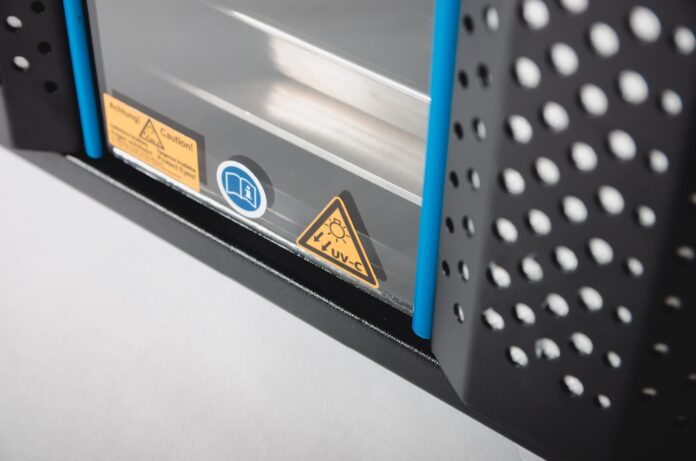Most viruses are airborne. This means that pathogens can be transmitted through the air over time and distance by small particles. The relevant pathogens generate aerosol particles or droplets that may spread by breathing, talking, coughing, sneezing, spraying liquids, or even toilet flushing. Inhalation of these pathogens can affect a person’s respiratory system and the rest of the body.
The most direct approach to limit airborne transmission is to inactivate pathogens within a short time of their production. A recent study at Columbia University Irving Medical Center has shown that exposure to a particular wavelength of ultraviolet light kills more than 99.9% of seasonal viruses present in airborne droplets.
So how exactly does the UV light work?
Ultraviolet (UV) Light
Ultraviolet, or UV Light exposure, has been used as a direct antimicrobial approach for years now. Scientists have shown its effectiveness against different strains of airborne viruses. The most common type of UV light used for germicidal applications is a low-pressure mercury-vapor arc lamp. This lamp emits around 254 nm, which is enough to disinfect unoccupied spaces such as empty hospital rooms or empty subway cars.
In recent years, a xenon lamp has been used as it emits a broad UV spectrum, which is even more effective. However, both of these conventional UVC light sources are carcinogenic and can be a health hazard to the eyes and skin.
Far-UVC Light
By contrast, the far-UVC light emits from 207 to 222 nm. The study at Columbia University has shown that these wavelengths do not cause human health issues, but are as effective as conventional UV light at killing microorganisms. The reason for this is that far-UVC light has a range of less than a few micrometers. In other words, it cannot reach the sensitive living human cells in the skin or the eyes as it is strongly absorbed by proteins through the peptide bond and other biomolecules.
But due to the size of viruses and the strength of wavelengths, UVC light can still target and destroy the molecular bonds that hold together the DNA of viruses. This also includes the infamous “superbugs,” which have developed a stronger resistance to conventional treatment methods such as antibiotics.
In the study, the researchers used a misting device to aerosolize two common coronaviruses. The aerosols were then flown through the air and in front of a far-UVC lamp. After the exposure, the researchers found that more than 99.9% of the exposed virus had been killed by the light. Based on these results, the researchers have come with an estimated time of needed UVC light exposure:
• It takes about 8 minutes to kill 90% of airborne viruses;
• It takes about 11 minutes to kill 95% of airborne viruses;
• It takes about 16 minutes to kill 99% of airborne viruses;
• It takes about 25 minutes to kill 99.9% of airborne viruses.
The key advantage of far-UVC light is its effectiveness in killing all types of viruses, regardless of drug resistance or toxic chemicals. Even if a new strain of a virus appears, the variation in UVC efficiency will be marginal. And seeing how far-UVC light has no health risks for humans, it may be a feasible and safe solution in occupied public indoor spaces.
In combination with other protective measures, it can drastically reduce the transmission of diseases in schools, gyms, hospitals, public transports, stations, restaurants, offices, and other places where people gather in large numbers.



